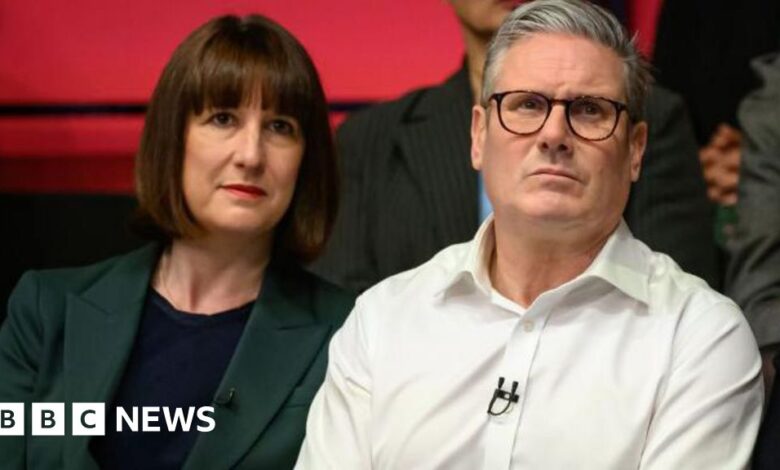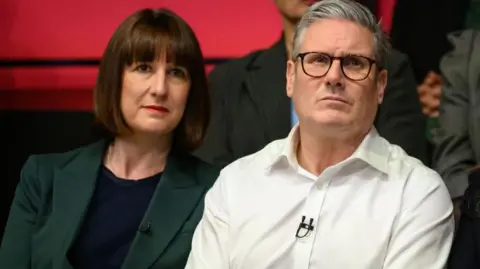What taxes might be raised in the Budget?

 Getty Images
Getty Images1. A ‘stealth tax’
One option would be to introduce a so-called stealth tax – a means of raising revenue which is not explicitly labelled or intended as a tax.
Paul Johnson, director of the Institute for Fiscal Studies (IFS), believes the most obvious solution would be to focus on tax thresholds – the amount of money you can earn before any tax starts to be paid.
Currently the thresholds on income tax and National Insurance are frozen until 2028, a policy brought in by the previous government. But Labour could extend them beyond this date.
The policy amounts to a tax rise because of a process called “fiscal drag”, which sees more people “dragged” into paying higher rates of tax as their wages rise.
The Resolution Foundation, a think tank that aims to improve living standards for low-to-middle income families, calculates the current freeze will generate about £40bn of revenue by 2028.
Its director James Smith told the BBC that may be enough to address the “shortfall” in the public finances, meaning Ms Reeves would not have to raise any other taxes.
2. Put up capital gains tax
Another route Ms Reeves could take is to put up capital gains tax (CGT).
This is charged on the profit made from the sale of an asset that has increased in value, with some examples including stocks that are not held in ISAs or second homes.
CGT is payable by individuals, but also self-employed sole traders, partners in business partnerships and company owners, among others.
It starts at a rate of 10% (or 18% on residential property) on profits above £3,000. It then rises to 20% on any amount above the basic tax rate, or 24% on residential property.
Critics point out that CGT rates are substantially lower than income tax. They say this can benefit wealthier people and Ms Reeves could opt to level the playing field or cut some CGT tax breaks for businesses.
However, industry groups have warned that increasing CGT could hit those at the centre of Labour’s plans to grow the economy.
“No government at all serious about growth would hike CGT on entrepreneurs selling a small business,” Tina McKenzie from the Federation of Small Businesses (FSB) told the BBC.
“Investing in a small business is already one of the least tax-efficient things anyone can do with their money,” she said, adding that she hoped the party would continue to work “in partnership” with business.
3. Fuel duty
Fuel duty is a tax that is levied on purchases of petrol, diesel and other fuels – the level it is set at should have an impact on what drivers pay at the pumps.
The levy is a “significant source” of revenue for government, according to Office for Budget Responsibility, with £24.7bn expected to have been raised in 2023-24.
But fuel duty has not been raised in more than a decade. Between 2012 and 2022 it was frozen at the same level.
Then in March 2022 the then Conservative chancellor Rishi Sunak cut it by 5p a litre after Russia’s invasion of Ukraine led to record pump prices.
However, some motoring groups have argued this cut – which is due to end in March next year – has not been passed on to drivers.
This has prompted the RAC to suggest the cut should be scrapped by Ms Reeves in the Budget.
Simon Williams, head of policy at the RAC, said the motoring group had reached the conclusion the chancellor “has no option but to put fuel duty back up”.
Ms Reeves “knows the 5p discount is losing the Treasury £2bn a year,” he said.
4. Reduce pension tax relief
When people or their employers pay into private pension pots, they receive tax relief on these contributions, up to set limits.
The relief allows some of a person’s earnings that may have been taken by government in tax to go into their savings for retirement instead.
Under the current system, savers receive tax relief at the same rate as their income tax – meaning basic rate taxpayers receive relief at 20% and higher rate taxpayers at 40% or 45%.
In the run-up to big political events like the Budget, Tom Selby, director of public policy at AJ Bell, says that there is often speculation that a flat rate of pension tax relief could be introduced.
This would mean the system is less generous for higher earners, but the IFS has suggested this could raise “billions” for the government.
Some opponents have said, however, this could dissuade people from saving for the future and might be difficult to implement.
5. Raise inheritance tax
Inheritance tax, currently paid at a rate of 40%, is charged on the part of a deceased person’s estate above a threshold of £325,000.
But it only applies to fewer than one in 20 estates.
No tax is paid if the estate is valued at less than £325,000, or if anything above this threshold is left to a husband or wife, civil partner, charity, or a community amateur sports club.
And if a home is part of the estate and a person’s children and grandchildren stand to inherit it, the threshold can go up to £500,000.
Ms Reeves could raise the rate of inheritance tax, or curb the relief available on certain inherited assets.
These include agricultural land and pension savings, which can both be inherited tax-free.
There are also allowances for unquoted shares, which are shares in a business not listed on the stock exchange.
James Smith of the Resolution Foundation believes inheritance tax should be reformed because there are “all sorts of reliefs within the system that allow you to move your assets in a way that allows you to avoid paying inheritance tax”.
However, Paul Johnson from the IFS says Ms Reeves will have to go further than simply curbing allowances, saying: “You won’t raise a lot by doing that – maybe a billion or two.”
Calls to cut or abolish inheritance tax come often as the tax is so unpopular, the Resolution Foundation says.




